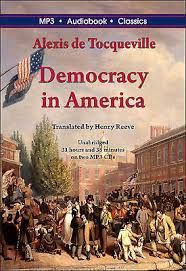Churchill and Leadershp
PUBLISHED:
I’ve just returned from a recent visit to London, where I toured the Churchill War Museum.
Drucker wrote of Churchill as an exemplary leader, and I kept thinking about this as I viewed the exhibit. Drucker had this to say about Churchill: “…there was amazingly little charisma in the bitter, defeated, almost broken Winston Churchill of the interwar years; what mattered was that he turned out, in the end, to have been right” (Drucker and Maciariello, 2008, p. 289). Drucker saw Churchill as a leader who clearly defined missions and goals – the first of the critical components of leadership Drucker defined. Charisma, style, and qualities did not define leadership for Drucker. Rather, it was “doing”, or the day-to-day activities that constitute real leadership. Often this requires flexibility and willingness to change given circumstances and conditions; leaders who recognize that they are capable of error realize that this is important. The mission of an effort or organization may also change, requiring the group to pivot. Drucker says that “when things go wrong – and they always do – [leaders] do not blame others” (Drucker and Maciariello, 2008, p. 290). Leadership also requires earning trust. This is gained through consistency, not cleverness or eloquence. In short, leadership, for Drucker, was mundane work, being accountable, showing up and doing the job, and exhibiting humility.
Which takes us to Churchill as a Drucker example of leadership. Churchill had a very checkered career as a politician. He changed parties twice. A conservative in 1900, he became a Liberal in 1904, only to rejoin the conservatives after World War I. Now, one could certainly argue that Churchill was displaying flexibility, responding to events that unfolded. But his early seeming indecisiveness made some view him with distrust.
Churchill also did not have an even track record of success as a man of service. His positions during the first World War created a lot of turmoil. He was the Head of the Royal Navy and was the architect of the disastrous Gallipoli campaign. He resigned after that British defeat.
But Churchill’s warnings against Hitler and Neville Chamberlain’s appeasement policies earned him the post of Prime Minister in 1940. Churchill created the position of Minister for Defence for himself, highly unusual for a Prime Minister. Also unusual was Churchill’s active involvement in the prosecution of the war effort; his speeches helped lift the British morale during difficult times, notably during intensive bombing campaigns by the Nazis.
Scholars of and others interested in leadership have analyzed Winston Churchill to uncover the keys to his effective service during the war. Some claim that Churchill was a charismatic leader, relying on his own oratory skills and personality to gain the public’s trust. Others argue that he was an authoritarian leader; some say his approach was bureaucratic, characterized by persistence and dogged adherence to plans. Still others say Churchill was a transformative leader, or a servant leader. It seems that, by picking certain traits, behaviors, or actions, one can make virtually any argument for what kind of leader Churchill was. In any event, his communication skills, incredible work ethic, and refusal to accept defeat roused the British public in a time of real need.
Some aspects of Churchill’s management and leadership style during the war would probably leave some of you ready to jump ship. He was notably hard on himself, and just as hard on others. The notion of a workday or weekend was nonexistent; work occurred around the clock regardless of the day. Many of those around him found him difficult to work for. One noted that he “wiped the floor” with a staff member who failed to bring a notice to his attention. Typists working in the war rooms were at times subjected to irate tirades and bursts of anger. Yet, at the same time, he could be very caring and concerned for the well being of personnel.
Drucker talks about this aspect of leadership: it is measured in results and performance, not in who likes you. I wonder how this idea of leadership flies in today’s society. Do we tolerate that “difficult” leader who gets incredible results? Or do we seek the leader who uses people skills more effectively? Do the results of the “difficult” leader result in longer term damages to the organization? Does the “likeable” leader get the results we need as an organization? Does leadership in crisis call for a different kind of leader? Or is leadership always a “foul-weather job,” as Drucker says?
It seems we are always trying to balance performance and results with “feeling good” about being part of an organization. Drucker had little patience with “feeling good.” He wrote that “An organization in which people are constantly concerned about feelings and about what other people will or will not like is not an organization that has good human relations. On the contrary, it is an organization that has very poor human relations…Constant anxiety over other people’s feelings is the worst kind of human relations” (Drucker and Maciariello, 2008, p. 424). But he was concerned with the need for status and function. Work needs to provide people with a sense of being an important part of a group or team (status), as well as contributing individually in a meaningful way that is personally fulfilling (function). This work may come through one’s job, or it may come through volunteer work or other activity. But Drucker understood that leaders need to make people feel like they are contributing individually and also part of a team. I think those working in the basement in the war rooms obviously felt that they were contributing to an enormously important effort, and that, even when Churchill was at his worst, they were still part of a group that was saving the nation (and the world) from Hitler and totalitarianism. Churchill motivated those workers in the basement, as well as a nation (and those outside of Britain who listened to his speeches). Even a “difficult” leader can be effective if they are able get results and instill what Drucker called the “Spirit of Performance”:
Leadership is lifting a person’s vision to higher sights, the raising of a person’s performance to a higher standard, the building of a personality beyond its normal limitations. Nothing better prepares the ground for such leadership than a spirit of management that confirms in the day-to-day practices of the organization strict principles of conduct and responsibility, high standards of performance, and respect for individuals and their work (Drucker and Maciariello, 2008, p. 288).
Maybe the case of Winston Churchill can make us think a bit about what leadership looks like more deeply. It isn’t just about a set of qualities. If it were, everyone would agree that Churchill was a fill-in-the-blank type of leader. Maybe leadership depends on the circumstances. Churchill was ineffective early and late in his career but found his calling during the crucial moments of the Second World War when the world needed him. Had history unfolded differently, would Churchill be relegated to the dustbin of has-beens? Probably. Do leaders need to constantly monitor their words to make sure they don’t offend? During normal times, this is good policy and effective communication. But in the heat of the moment, we are all human, and will likely have outbursts that are inappropriate or, more likely, offend someone without our intending that to happen. Part of Management as a Liberal Art is understanding this “art” aspect of management. Dealing with people involves dealing with the whole person. Churchill had a war to contend with. He also got little sleep (and was notoriously lax in other areas of self care). I’m sure the typists he railed at understood the pressure he was under, and how people can react to such pressure. We may not be at war, but your co-worker or boss may have had no sleep, and thus have a short fuse. Churchill apologized for his outbursts. We should too, and we should also recognize that work tensions are often not related to work at all.
My takeaway from the visit to the Churchill Museum was that it humanized him as a leader. I returned to Drucker’s writing on him when I got home, and Drucker similarly characterized Churchill as a person. Churchill wasn’t some charismatic, God-like figure who loomed over the war as a presence. He led by “being right,” by performing, by being effective in spite of his personality, not because of it. For me, this is incredibly insightful, and one of the best evaluations of Churchill I’ve read. While I value much of what people say about leadership qualities and style, I return to Drucker’s emphasis on performance and effectiveness. Real people, those who are fallible and have bad days, who may not always speak beautifully and present themselves with a media persona, can be the most effective leaders when needed.
Sources
“An Overview of Executive Leadership Styles and Traits,” Washington State University website, Carson College of Business, June 4 2020, https://onlinemba.wsu.edu/blog/an-overview-of-executive-leadership-styles-and-traits/.
Churchill War Rooms Museum, London, U.K., https://www.iwm.org.uk/visits/churchill-war-rooms.
“Churchill: Leader and Statesman,” International Churchill Society, https://winstonchurchill.org/the-life-of-churchill/life/churchill-leader-and-statesman/.
Lewis W. Douglas, “The Qualities of Leadership: Churchill as Diplomat,” The Atlantic, March 1965, https://www.theatlantic.com/magazine/archive/1965/03/the-qualities-of-leadership-churchill-as-diplomat/660832/.
Peter F. Drucker and Joseph A. Maciariello, Management: Revised Edition, Harper Collins, 2008.
“Winston Churchill: How a flawed man became a great leader,” BBC News Magazine, 23 January 2015, https://www.bbc.com/news/magazine-30934629.
Caroline Longstaffe, “Winston Churchill, a leader from history or an inspiration for the future?”, Industrial and Commercial Training, Vol. 37 No. 2, 2005, pp. 80-83.
Dean Williams, “Winston Churchill’s Terrible Leadership Failure,” Forbes, April 24 2015.





